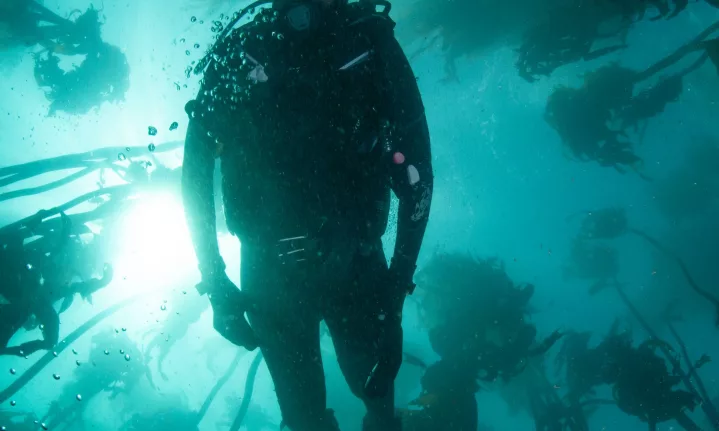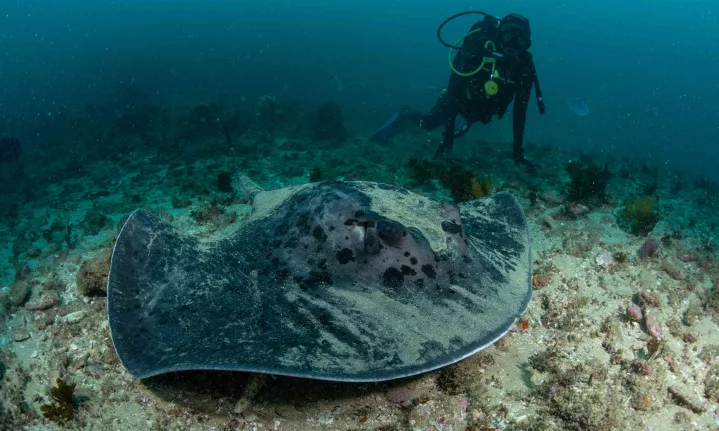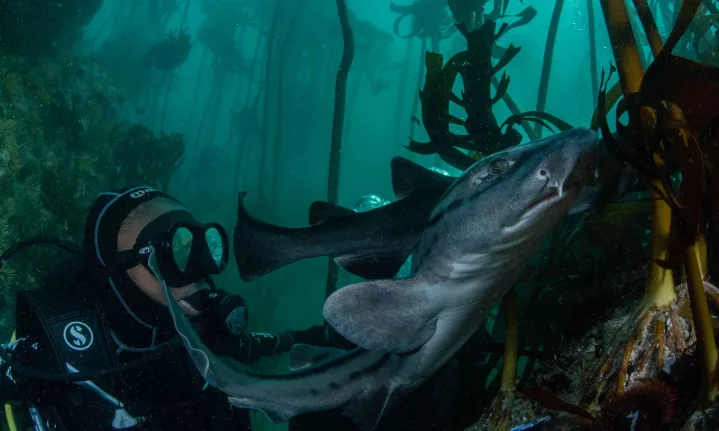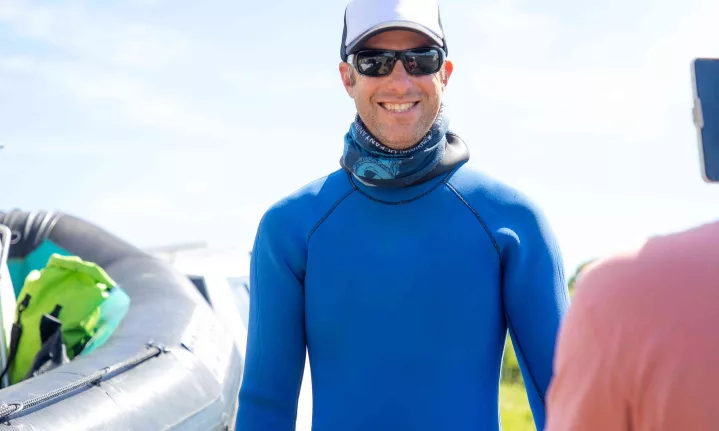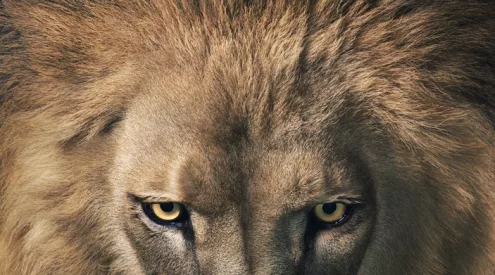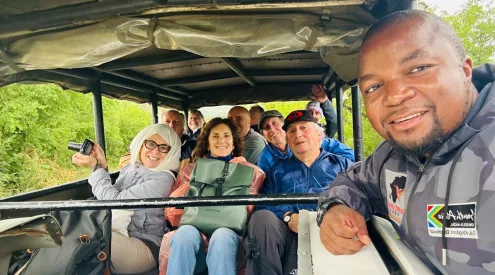Why dive in places others can’t to capture images that show the natural world in all its glory? Steve Benjamin wants viewers to feel something when they look at his images: wonder, terror, awe. He also helps scientists and conservationists highlight issues affecting our oceans.
He recently worked on WildTrust’s latest short film, See Us, part of the organisation’s marine campaign On the Brink, which highlights South Africa’s ideal position as a lifeboat for shark and ray species in its waters and globally.
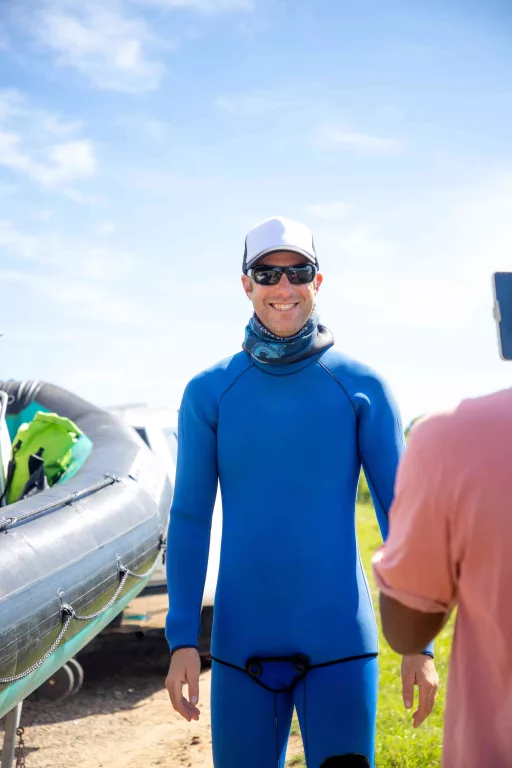
How did you get into underwater photography?
I was born in Cape Town. I’ve always been passionate about the natural world, if not the oceans, bird- and wildlife. I started bodyboarding and spearfishing at a young age. During my formative years, I volunteered at the Two Oceans Aquarium on a project at the holding tank when the aquarium was being built. This was organised by my primary school teacher Russell Stevens, who now leads the Two Oceans Aquarium’s Education Centre team.
I studied zoology and ichthyology at the University of Cape Town (UCT). We covered everything from mammals to insects, physics, chemistry, math and science. A former Two Oceans Aquarium employee I’d met when volunteering, Maryke Musson, offered me my first job fish farming in Hermanus. Then, I spent a year working as a dive master with tiger sharks in Aliwal Shoal, KwaZulu-Natal. There, I met many influential photographers and filmmakers, among whom were Thomas Peschak, an assignment photographer for National Geographic, and Roger Horrocks, an underwater cinematographer best known for his work on Netflix’s award-winning documentary My Octopus Teacher.
Your most memorable assignments?
A highlight was visiting Aldabra, Seychelles, a Marine Protected Area (MPA) and UNESCO World Heritage Site, with Thomas. It’s a refuge for wildlife, dominated by giant tortoises and the Aldabra rail, the last-surviving flightless bird in the West Indian Ocean.
I travelled all over Baha, Mexico, where I dove with grey whales and giant trevally in MPAs that the surrounding communities looked after, sort of a bottom-up approach, with locals safeguarding the natural environment so life could flourish.
I assist Roger Horrocks with logistics and support. Usually, Netflix or the BBC will get hold of me, and I’ll be the guy who brings their vision to life, sorting out boats, crew, safety measures and insurance. The film team will fly out, and we’ll spend time in a location tackling a topic. We’ve captured feeding humpback whales off Cape Town for Netflix’s Our Planet and surfing dolphins on the Transkei for Disney.
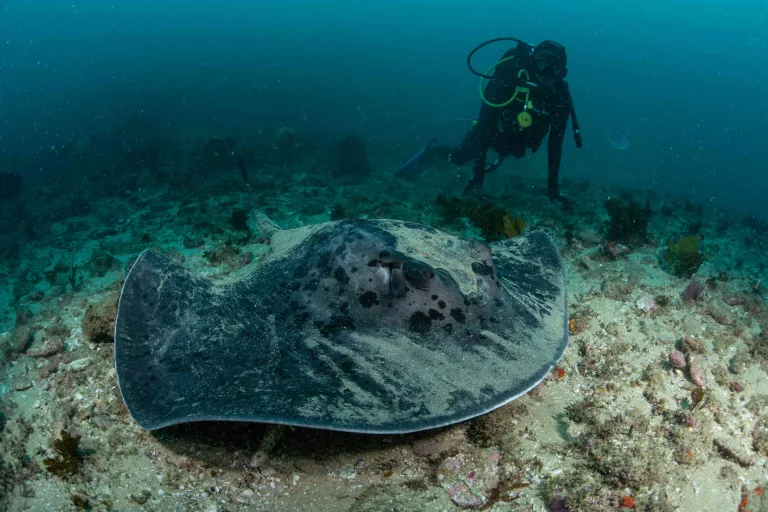
Why did you want to get involved with See Us?
Lauren van Niekerk of WildTrust asked me to participate in a short film highlighting sharks and rays in two MPAs, Aliwal Shoal and Table Mountain National Park in Cape Town. WildTrust shows South African people the incredible biodiversity on our coastline and is also involved in educating and uplifting African people, women especially, in science, bringing our next generation into the marine conservation space.
What are the key differences between the MPAs you explored, and what attracts sharks and rays there?
The ocean is colder in Cape Town than in Durban, so you’ll typically find species such as cat sharks and great whites among the kelp forests. In KwaZulu-Natal, where it’s warmer, we were looking for blacktip sharks, bull sharks, hammerhead sharks and sting rays. The MPAs we explored are accessible, so you can go scuba diving and see these creatures yourself.
How many species of sharks and rays did you find, and did your findings match your expectations?
Despite the big swell in Cape Town, I found all the catshark species I wanted to show Dive Master Thandeka Hlongwa: puffadder shyshark, dark shyshark, pyjama shark, leopard cat shark. We also saw a super-large, short-tailed ray on a test dive when we were getting Thandeka used to the water – she’s from KwaZulu-Natal, and that was the first time she’d dived in Cape Town.
Aliwal Shoal was surprising. We spotted a blacktip shark and one ray species, which was less than I expected. I thought we might’ve found a ragged-tooth, bull or tiger shark. We actually saw quite a few turtles, such as loggerheads and hawksbills.
How far did your education help?
It gives me a better sense of timeline, place and relationship between the ocean, species and habitats. It helps me understand things like water movement and the Agulhas Current, how and where scientists place reserves and how they protect marine life, and the evolutionary links between creatures and appreciating they need enough space to develop. It’s not just my education; it’s a grounding in science and continued communication with scientists.
Describe the emotions you experienced.
I’d already seen these places, so witnessing Thandeka’s reactions on her first dive in Cape Town was special. She’s a Zulu woman who’s pursued her passion for the ocean by doing things outside her cultural norms like learning to swim and understanding wildlife. My takeaway from making See Us was drawing inspiration from Thandeka’s journey and showing these parts of South Africa to most of the country who, like her, are young, African and not always from the coast.
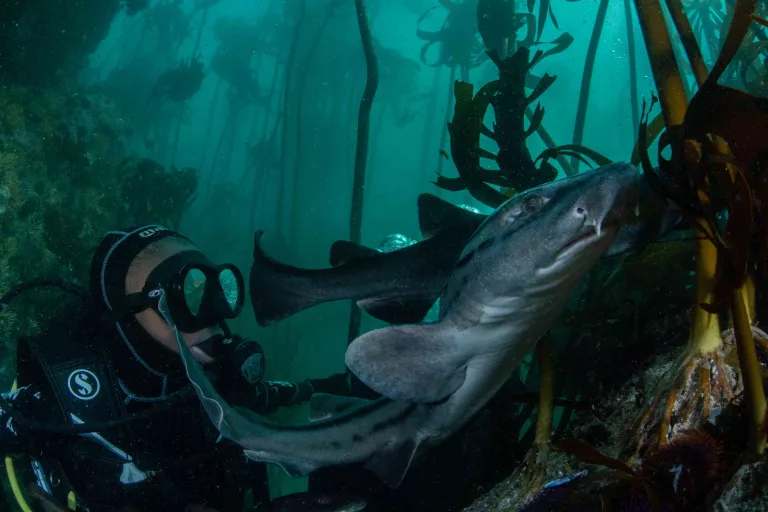
Why are sharks and rays one of the most threatened species on the planet?
Humans persecute sharks because of the fear they instill. People don’t like danger in their environment, so they usually remove top predators, for example, by placing shark nets in the waters off the KwaZulu-Natal coastline.
We also catch sharks for food and recreationally. Additionally, many of their food sources or reproductive habitats no longer exist. Most of our rivers and estuaries are suffering degradation, so they’re not functioning correctly.
Most sharks and rays only produce a few young per year and take a very long time to reach maturity. They’re long-lived, slow reproducing creatures, which means they can’t handle any persecution or removal from their environment. All the above are detrimental to them.
Sharks migrate over great distances and also need seasonal refuges. We might have large MPAs, but sharks spend a lot of time outside of them getting caught.
What do you want to achieve with See Us?
I want viewers to appreciate MPAs and consider seeing them themselves. I’d like them to draw inspiration from Thandeka to take a keen interest in the ocean and, ultimately, protect it.
Pictures: Steve Benjamin, Mnqobi Zuma
To learn more about this campaign, visit On the Brink
For more information, visit Animal Ocean and Seal Snorkeling
Read our interview with Thandeka Hlongwa, I Speak for the Sea, in the November 2023 issue of Getaway, on shelf from 13 October 2023.
Also Read: On the Brink releases inspiring short film, See Us









